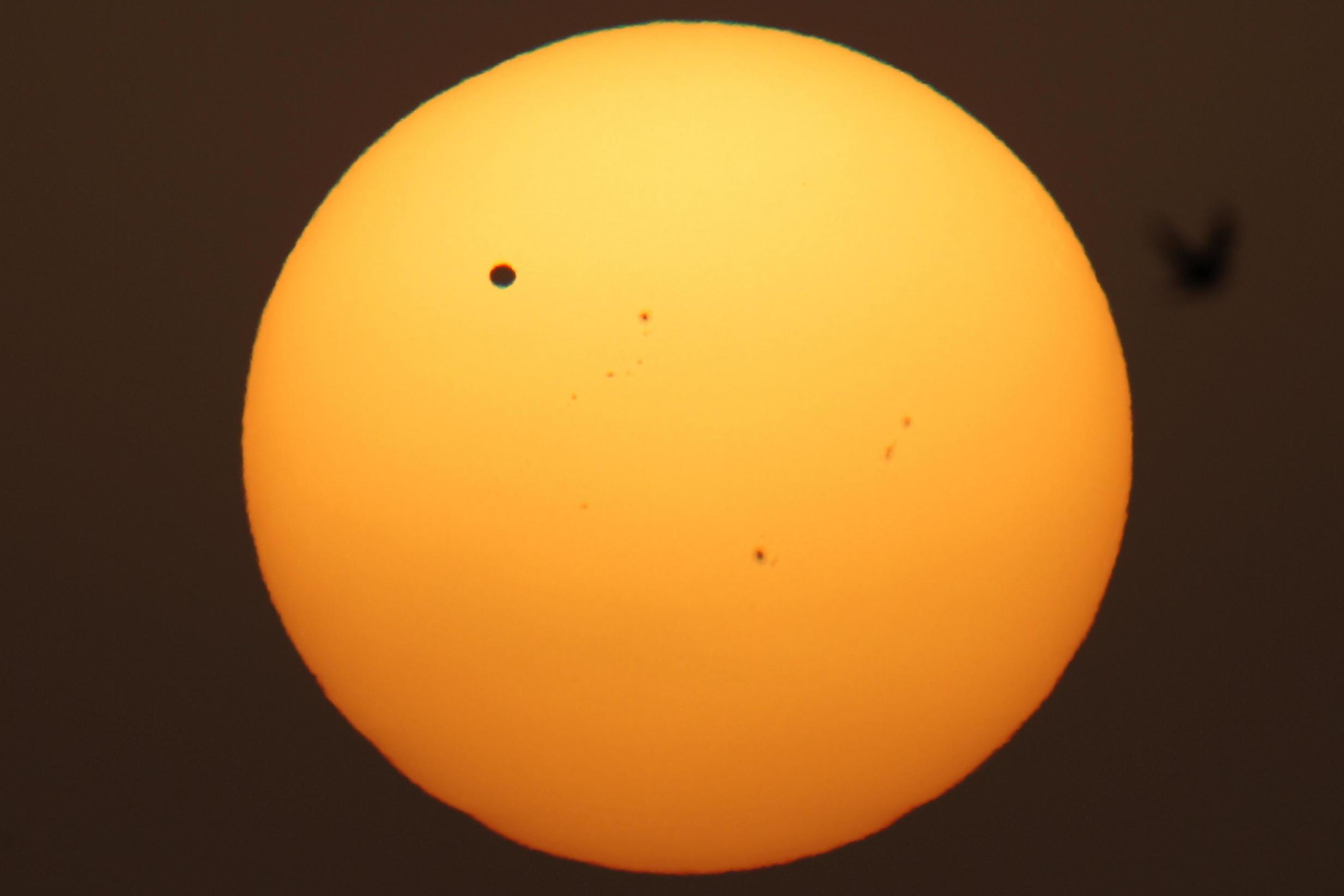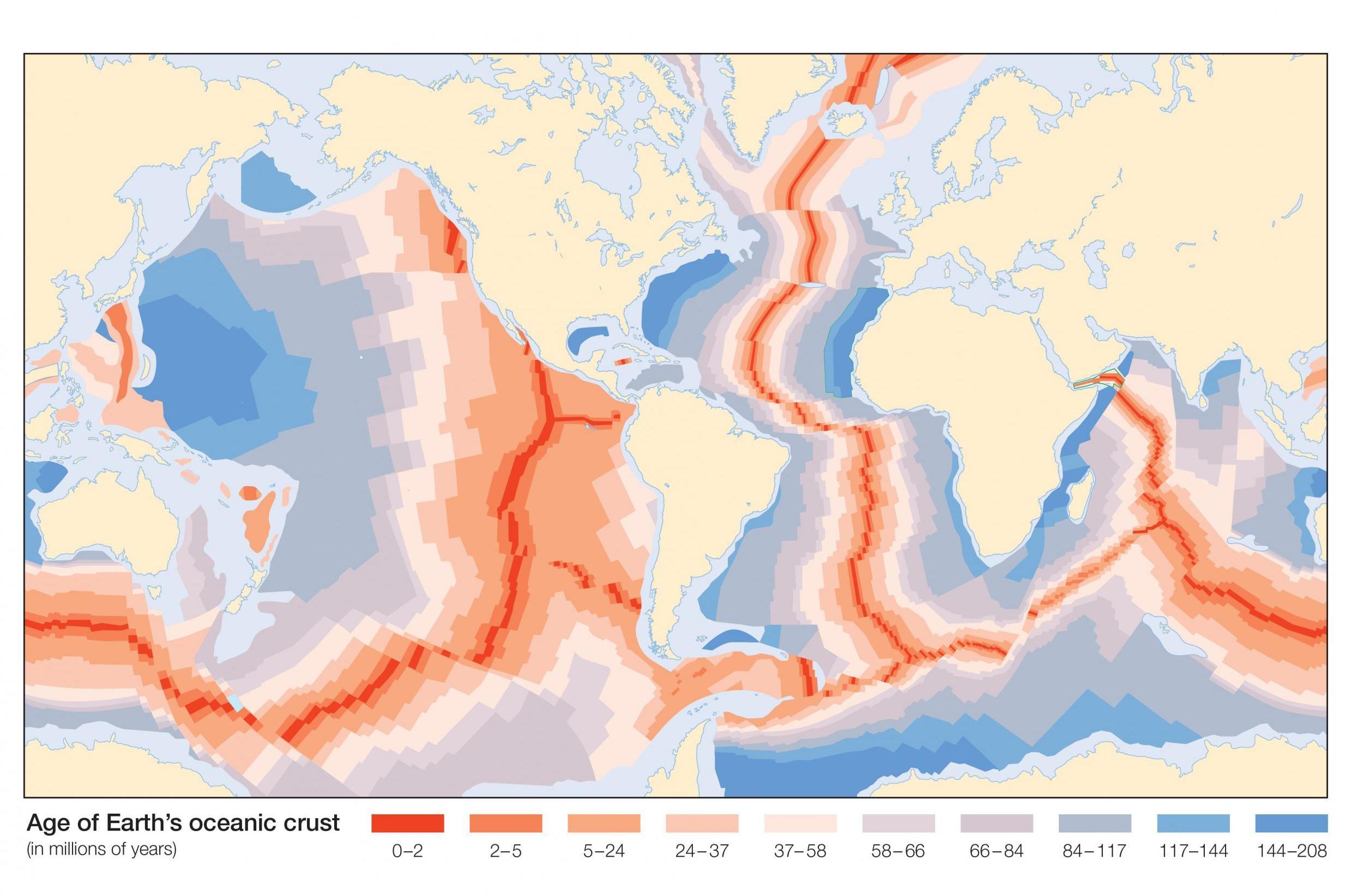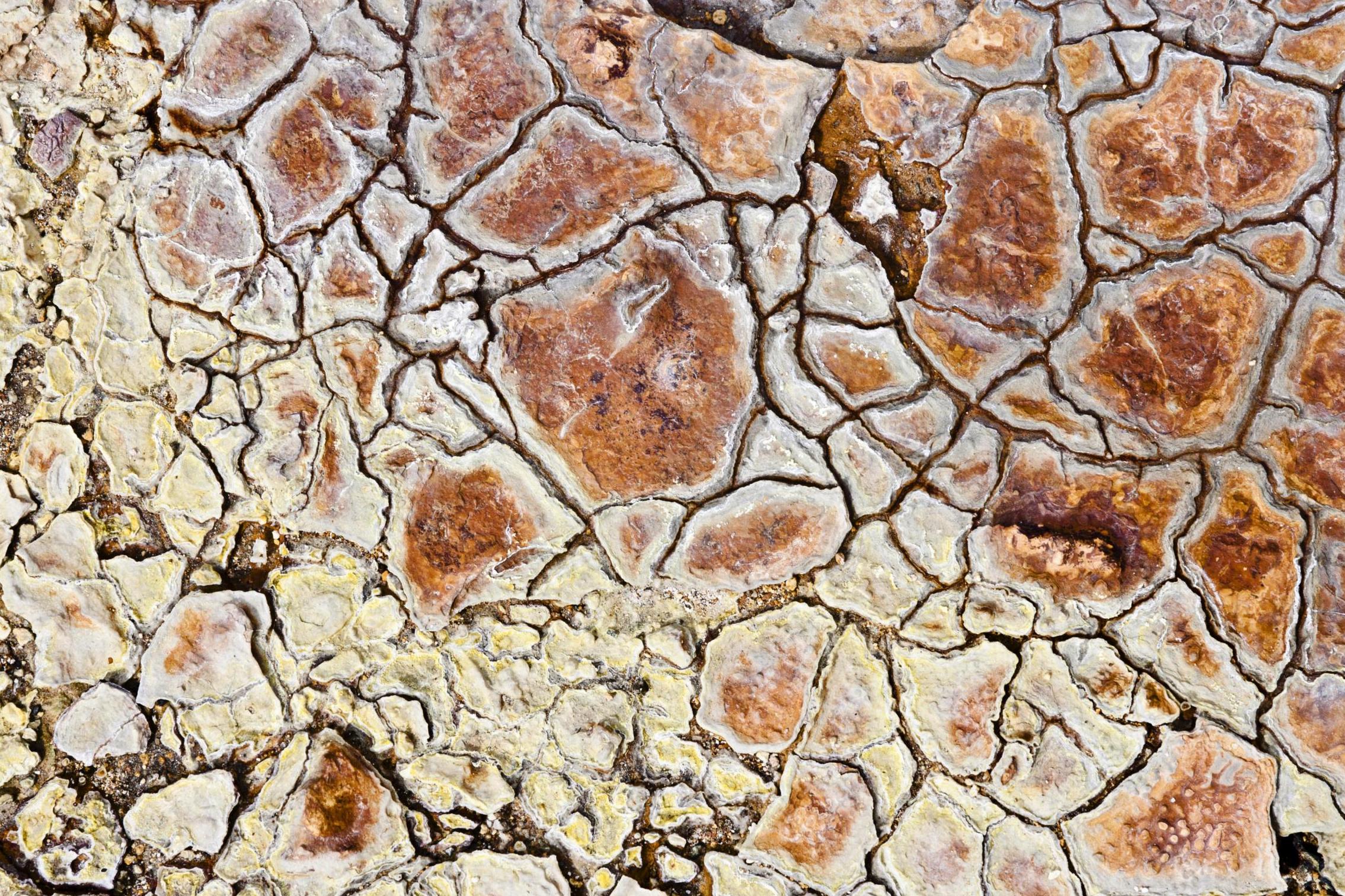Plate tectonics may be responsible for evolution of life on Earth, say scientists
Billions of years ago, the breakup of our planet’s outer shell made the Earth stable and habitable. But the shifting of continents is still a mysterious process, says Natalie Angier

Your support helps us to tell the story
From reproductive rights to climate change to Big Tech, The Independent is on the ground when the story is developing. Whether it's investigating the financials of Elon Musk's pro-Trump PAC or producing our latest documentary, 'The A Word', which shines a light on the American women fighting for reproductive rights, we know how important it is to parse out the facts from the messaging.
At such a critical moment in US history, we need reporters on the ground. Your donation allows us to keep sending journalists to speak to both sides of the story.
The Independent is trusted by Americans across the entire political spectrum. And unlike many other quality news outlets, we choose not to lock Americans out of our reporting and analysis with paywalls. We believe quality journalism should be available to everyone, paid for by those who can afford it.
Your support makes all the difference.The theory of plate tectonics is one of the great scientific advances of our age, right up there with Darwin’s theory of evolution and Einstein’s theory of relativity.
The idea that Earth’s outer shell is broken up into giant puzzle pieces, or plates, all gliding atop a kind of conveyor belt of hot, weak rock – here rising up from the underlying mantle, there plunging back into it – explains much about the structure and behaviour of our home planet: the mountains and ocean canyons, the earthquakes and volcanoes, the very composition of the air we breathe.
Yet success is no guarantee against a midlife crisis, and so it is that half a century after the basic mechanisms of plate tectonics were first elucidated, geologists are confronting surprising gaps in their understanding of a concept that is truly the bedrock of their profession.
They are sparring over when, exactly, the whole movable plate system began. Is it nearly as ancient as the planet itself – that is, roughly 4.5 billion years old – or a youthful 1 billion years, or somewhere in between?
They are asking what caused the shell to crack apart in the first place, and how the industrious recycling of Earth’s crust began.
They are comparing Earth with its sister planet, Venus. The two worlds are roughly the same size and built of similar rocky material, yet Earth has plate tectonics and Venus does not. Scientists want to know why.
“In the 1960s and 1970s, when people came up with the notion of plate tectonics, they didn’t think about what it was like in the distant past,” says Jun Korenaga, a geophysicist at Yale University.
“People were so busy trying to prove plate tectonics by looking at the present situation or were caught up applying the concept to problems in their own field. The origin issue is a much more recent debate.”
Researchers also are exploring the link between plate tectonics and the evolution of complex life. Fortuitously timed continental collisions and mountain smackdowns may well have supplied crucial nutrients at key moments of biological inventiveness, like the legendary Cambrian explosion of 500 million years ago, when the ancestors of modern life forms appeared.

“The connection between deep Earth processes and Earth surface biology hasn’t been thought about too clearly in the past, but that’s changing fast,” says Aubrey Zerkle, a geochemist at the University of St Andrews in Scotland.
It is increasingly obvious that “you need plate tectonics to sustain life,” Zerkle added. “If there wasn’t a way of recycling material between mantle and crust, all these elements that are crucial to life, like carbon, nitrogen, phosphorus, and oxygen, would get tied up in rocks and stay there.”
Science is a democratic process, and the prevailing view that Earth started to exhibit behaviours that look like plate tectonics 2.5 to 3 billion years ago
The origin and implications of plate tectonics were the subject of a recent meeting and themed issue of Philosophical Transactions of the Royal Society.
Researchers said that pinning down when and how Earth’s vivid geological machinations arose will do more than flesh out our understanding of our home base. The answers could well guide our search for life and habitable planets beyond the solar system.
Robert Stern, a geoscientist at the University of Texas at Dallas, argues that if we are looking for another planet to colonise, we want to avoid ones with signs of plate tectonic activity. Those are the places where life is likely to have evolved beyond the “single cell or worm stage, and we don’t want to fight another technological civilisation for their planet.”
‘A relatively benign way for the Earth to lose heat’
The idea that continents are not fixed but rather peregrinate around the globe dates back several centuries, when mapmakers began noticing the complementarity of various land masses – for example, the way the northeast bulge of South America looks as if it could fit snugly in the cupped palm of the southwest coast of Africa.
But it was not until the mid-20th century that the generic notion of “continental drift” was transformed into a full-bodied theory, complete with evidence of a subterranean engine driving these continental odysseys.

Geologists determined that Earth’s outer layer is broken into eight or nine large segments and five or six smaller ones, a mix of relatively thin, dense oceanic plates riding low and thicker, lighter continental plates bobbing high.
At large fissures on the ocean floor, melting rock from the underlying mantle rises up, adding to the oceanic plates. At other fracture points in the crust, oceanic plates are diving back inside, or subducting, their mass devoured in the mantle’s hot belly.
The high-riding continental plates are likewise jostled by the magmatic activity below, skating around at an average pace of 1 or 2 inches a year, sometimes crashing together to form, say, the Himalayan mountain chain, or pulling apart at Africa’s Great Rift Valley.
All this convective bubbling up and recycling between crust and mantle, this creative destruction and reconstruction of parts – “tectonic” comes from the Greek word for build – is Earth’s way of following the second law of thermodynamics. The movement shakes off into the frigidity of space the vast internal heat that the planet has stored since its violent formation.
People were so busy trying to prove plate tectonics by looking at the present situation or were caught up applying the concept to problems in their own field. The origin issue is a much more recent debate
And while shifting, crumbling plates may seem inherently unreliable, a poor foundation on which to raise a family, the end result is a surprising degree of stability. “Plate tectonics is a relatively benign way for Earth to lose heat,” says Peter Cawood, an Earth scientist at Monash University in Australia.
“You get what are catastrophic events in localised areas, in earthquakes and tsunamis,” he adds. “But the mechanism allows Earth to maintain a stabler and more benign environment overall.”
Unfortunately for geologists, the very nature of plate tectonics obscures its biography. Oceanic crust, where the telltale mantle exchange zones are located, is recycled through the upwelling and subducting pipeline every 200 million years or so, which means hard evidence of tectonic origins was destroyed long ago.
Continental crust is older, and rocks dating back more than 4 billion years have been identified in places like Jack Hills, Australia. But continental plates float above the subductive fray, revealing little of the system’s origins.
Nevertheless, geoscientists are doing their best with extant rocks, models and laboratory experiments to sketch out possible tectonic timelines. Korenaga and his colleagues have proposed that plate tectonics began very early, right after Earth’s crust solidified from its initial magmatic state.
“That is when the conditions would have been easiest for plate tectonics to get started,” he says. At that point, he says, most of the water on Earth – delivered by comets – would still be on the surface, with little of it having found its way into the mantle. The heat convecting up through the mantle would exert a stronger force on dry rocks than on rocks that were lubricated.

At the same time, the surface water would make it easier for the hot, twisting rocks beneath to crack the surface lid apart, rather as a sprinkling of water from the tap eases the task of popping ice cubes from a tray. The cracking open of the surface lid, Korenaga says, is key to getting the almighty subduction engine started. With subduction established, water, like oceanic crust, would cycle between Earth’s surface and mantle.
Water is constantly recycled between the mantle and crust
On the opposite end of the origins debate is Stern, who argues that plate tectonics is a mere billion years old or less, and that Earth spent its first 3.5 billion years with a simple “single lid” as its outer shell: a crust riddled with volcanoes and other means of heat ventilation, but no moving plates, no subduction, no recycling between inside and out.
As evidence of the youthfulness of the plate regimen, Stern points to two classes of rocks: ophiolites and blueschist.
Ophiolites are pieces of oceanic crust atop bits of underlying mantle that have made their way onto land and thus have escaped the relentless recycling of oceanic crust. Recent research has shown that ophiolites are not just any slice of oceanic crust, Stern says, but rather were formed by the forces of subduction.
Similarly, blueschists are rocks that are fashioned under very high pressure but low temperatures, and “the only place you can do that is in a subduction zone”, Stern says.
Nearly all ophiolites are less than 1 billion years old, he adds, while the most ancient blueschists, found in China, are just 800 million years old. No ophiolites, no blueschists, no evidence of subduction or plate tectonics.
Most geologists opt for a middle ground. “Science is a democratic process,” says Michael Brown, a geologist at the University of Maryland and an editor of the themed issue, “and the prevailing view is that Earth started to exhibit behaviours that look like plate tectonics 2.5 to 3 billion years ago.”
Significantly, that chronology decouples plate tectonics from the origin of life on Earth: evidence of the earliest single-celled organisms dates back more than 3.6 billion years. Nevertheless, scientists view plate tectonics as vital to the sustained evolution of that primordial life.
Plate tectonic activity did not just help to stabilise Earth’s heat management system. The movement kept a steady supply of water shuttling between mantle and crust, rather than gradually evaporating from the surface.
It blocked the dangerous buildup of greenhouse gases in the atmosphere by sucking excess carbon from the ocean and subducting it underground. It shook up mountains and pulverised rocks, freeing up essential minerals and nutrients like phosphorus, oxygen and nitrogen for use in the growing carnival of life.
Zerkle discerns a link between geological and biological high drama: “It’s been suggested that time periods of supercontinental cycles – when small continents smash together to make large supercontinents, and those supercontinents then rip apart into smaller continents again – could have put large pulses of nutrients into the biosphere and allowed organisms to really take off.”
Plate tectonics also built the right playing fields for Darwinian games.
“Think about what drives evolution,” Stern says. “It’s isolation and competition. You need to break continents and continental shelves apart, and separate one ocean from another, for speciation to occur.”
Life is always falling apart, on the rocks – and a good thing, too.
© New York Times
Join our commenting forum
Join thought-provoking conversations, follow other Independent readers and see their replies
Comments